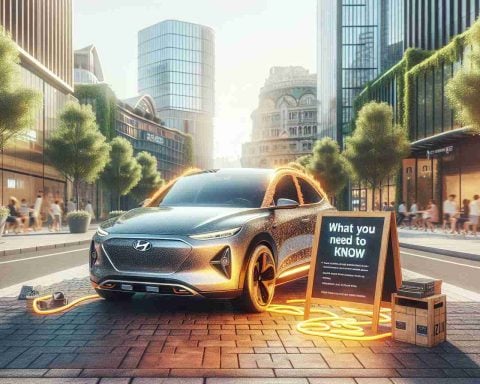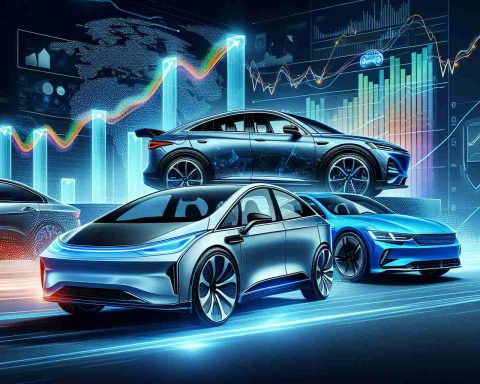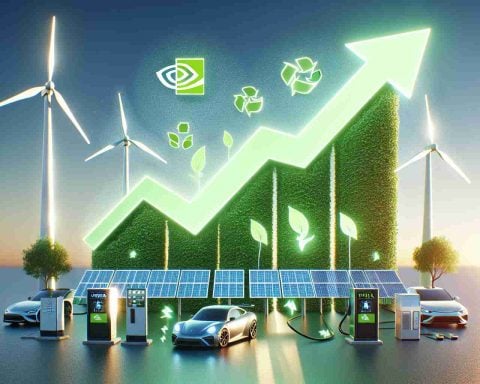- Nvidia’s Blackwell architecture launches with RTX 5090 GPUs, featuring up to 92 billion transistors, promising significant performance improvements.
- Strategic partnerships with Toyota and Aurora strengthen Nvidia’s role in autonomous technology, highlighting pivotal integrations like DriveOS and Drive AGX Orin.
- The company’s autonomous initiatives are set on a trajectory toward a $400 billion market by 2035.
- Nvidia introduces the Cosmos platform, revolutionizing AI development by utilizing synthetic data to streamline robot training processes.
- Collaborations with key industry players, such as Uber, enhance Nvidia’s impact in AI and robotics.
- Nvidia remains a pivotal force in technological advancement, showcasing relentless innovation in AI and automated systems.
As 2025 unfolds, all eyes remain fixed on Nvidia, the titan of high-performance semiconductor manufacturing. Amidst swirling market fluctuations, Nvidia stands tall, driven by groundbreaking advancements and strategic partnerships that promise to reshape the tech landscape.
Unleashing the Blackwell Beast
Come January 30, Nvidia’s Blackwell architecture GPUs are set to dazzle the tech world. With up to 92 billion transistors, models like the RTX 5090 promise leaps in graphical prowess. Early signs suggest a torrent of demand, as prominent tech firms clamor for peak-performing chips. Investors ponder the long-term impact, yet a modest forward price-to-earnings ratio hints at more than ephemeral success.
Taking the Driver’s Seat in Autonomy
Nvidia’s strides toward an autonomous future are further cemented with pivotal alliances, notably with Toyota and Aurora. At the cutting-edge Consumer Electronics Show 2025, Nvidia unveiled enhanced collaborations, integrating its robust DriveOS and Drive AGX Orin platform into Toyota’s next-generation fleet. This venture not only strengthens its foothold but also signals a technological wave in the automotive sphere, poised to generate a $400 billion market by 2035.
Revolutionizing AI and Robotics
Never one to rest on its laurels, Nvidia’s ceaseless innovation continues with the launch of its Cosmos platform. Designed to streamline AI development, Cosmos employs synthetic data to train robots and autonomous systems, eradicating the costly and time-consuming data labeling process. Collaborations with industry stalwarts like Uber amplify its influence, offering a glimpse into a future where AI and robotics seamlessly intersect.
Nvidia’s narrative of progress underscores a significant takeaway: innovation does not merely await the future—it constructs it. As the year advances, Nvidia’s unyielding drive towards AI and autonomy confirms its place as a beacon of technological evolution.
Nvidia’s 2025 Innovations: Unleashing the Future of Tech
How-To Steps & Life Hacks: Maximizing Nvidia’s Blackwell Architecture GPUs
To make the most of Nvidia’s Blackwell architecture GPUs, such as the RTX 5090, consider these steps:
1. Upgrade Your System: Ensure your motherboard and power supply are compatible with high-performance hardware. The RTX 5090 requires a robust infrastructure to function optimally.
2. Optimize Software: Use tools like Nvidia GeForce Experience to tweak game settings for the best performance without compromising on quality.
3. Stay Updated: Regularly update GPU drivers for improved performance and fixes – Nvidia frequently releases updates that optimize game and software integration.
Real-World Use Cases: Nvidia in AI and Robotics
Nvidia’s collaboration with Uber and other tech giants showcases practical applications:
– Autonomous Vehicles: Nvidia’s Drive AGX Orin platform supports real-time data processing necessary for self-driving cars, facilitating safer and more efficient transportation.
– Robotics: By utilizing synthetic data for training AI models, Nvidia’s Cosmos platform accelerates development across industries such as manufacturing and healthcare.
Market Forecasts & Industry Trends
By 2035, the autonomous vehicle market, fueled by technologies like Nvidia’s, could reach $400 billion. As autonomous vehicles become mainstream, expect demand in related tech sectors to surge, pushing Nvidia’s influence even further.
Reviews & Comparisons: Blackwell GPUs vs. Competitors
Though early reviews of Nvidia’s Blackwell GPUs, such as the RTX 5090, are positive, comparisons often place AMD’s latest offerings close behind. Nvidia holds an edge in raw power and AI integration, while AMD competes with pricing and efficiency.
Controversies & Limitations
Despite advancements, Nvidia faces critiques regarding:
– Pricing: High costs place Nvidia’s top-tier products out of reach for many consumers.
– Ethical Concerns: Use of AI and autonomous systems raises questions about data privacy and job displacement.
Features, Specs & Pricing
– RTX 5090 Specs: 92 billion transistors, new cooling technology, and enhanced ray tracing capabilities.
– Price: Expected range from $1,200 to $1,600, varying by model and configuration.
Security & Sustainability
Nvidia remains committed to sustainable tech development, focusing on reducing carbon footprints through energy-efficient designs. Security remains robust with integrated AI-driven threat detection.
Insights & Predictions
Expect Nvidia to dominate in AI and autonomous vehicle tech well into the next decade. Industry analysts foresee ongoing innovations, expanding Nvidia’s market influence further.
Pros & Cons Overview
Pros:
– Leading-edge performance and AI capabilities.
– Strong industry partnerships boost market presence.
Cons:
– High product costs.
– Ethical and privacy concerns related to AI use.
Actionable Recommendations
To leverage Nvidia’s technology:
– For gamers, invest in updated hardware to utilize new GPU capabilities.
– For businesses, explore Nvidia’s AI platforms like Cosmos to streamline operations.
Quick Tips
– Regularly update all Nvidia software for better security and performance.
– Consider second-hand market options for more affordable Nvidia hardware.
For further engagement with Nvidia’s innovations, visit the official Nvidia website for more information.



















